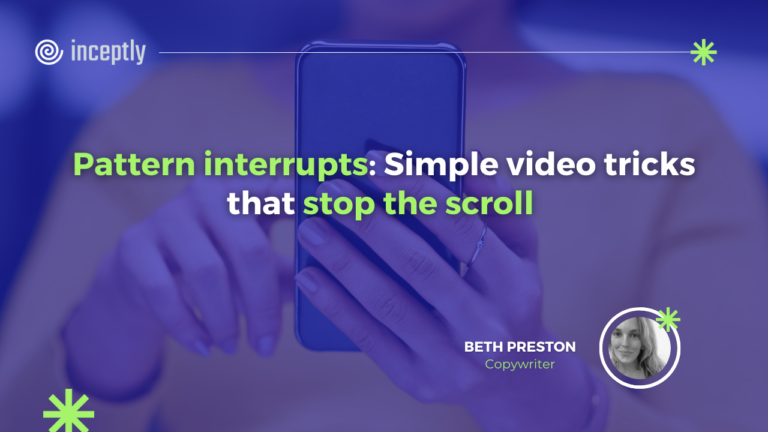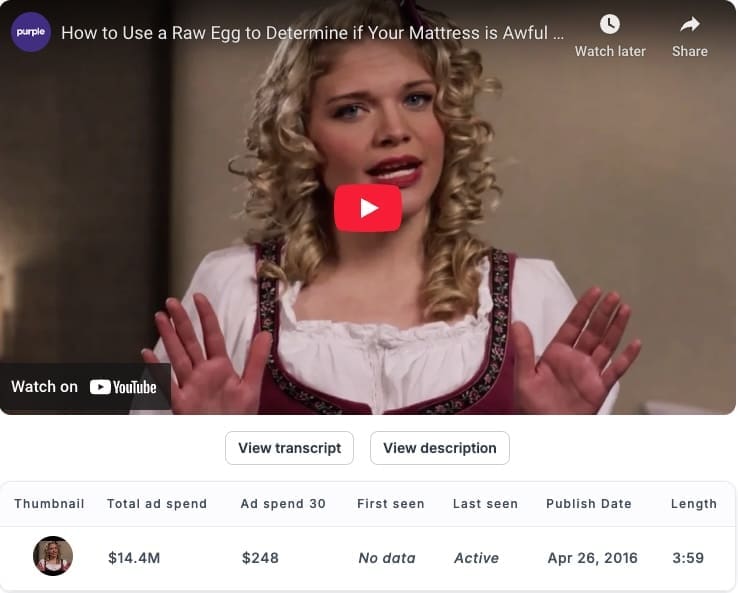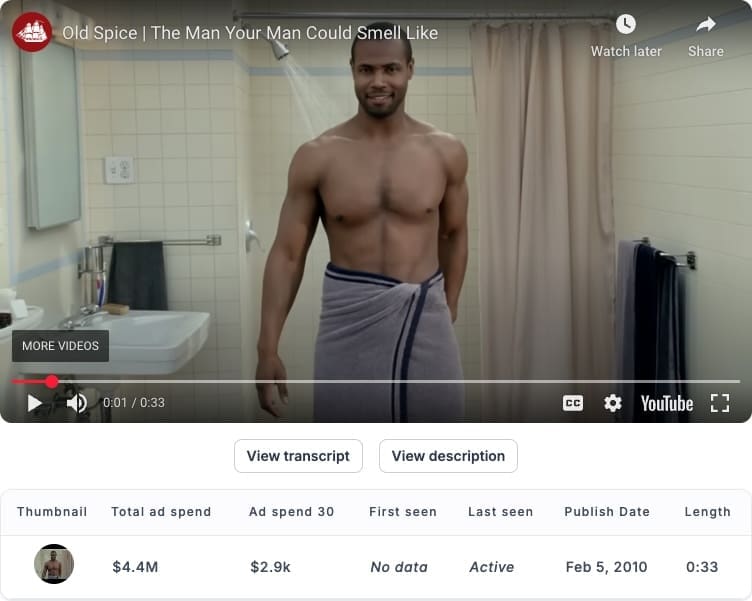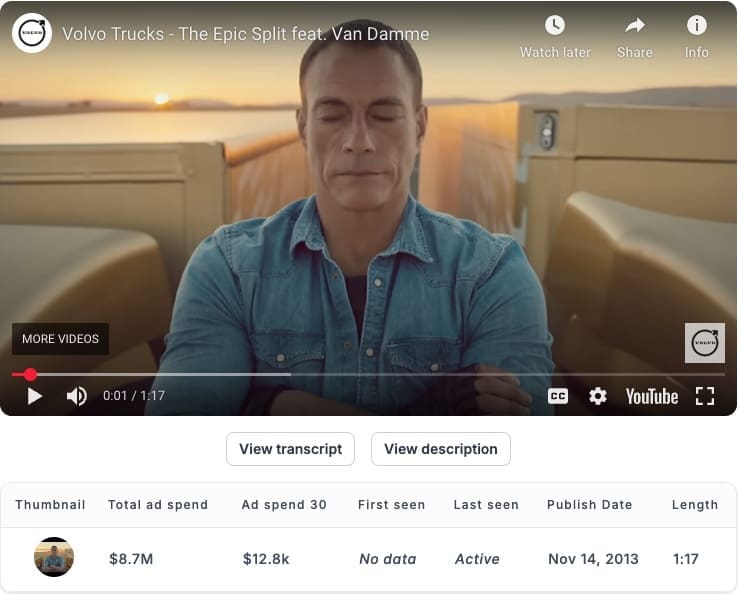
In today’s digital world, you have approximately 2 seconds to grab your audience’s attention before they scroll past your content. Two seconds. That’s about the time it took you to read this sentence.
As attention spans shrink and content competition heats up, mastering pattern interrupts in video marketing isn’t just helpful—it’s essential for survival. At our agency, we’ve tested hundreds of video campaigns and found that the right pattern interrupt can increase watch time by up to 85% and conversion rates by as much as 32%.
Let’s explore five battle-tested pattern interrupt techniques that consistently break through the noise and command attention across all major platforms.
Want to brainstorm with our team on new ways to scale your business with YouTube Ads (and other performance video platforms)?
Join us for a free YouTube ad brainstorming session👇
What are pattern interrupts (and why they matter)
First things first—pattern interrupts are psychological triggers that break expected behavior or thought patterns. In video marketing, they’re deliberate disruptions designed to jolt viewers out of autopilot scrolling.
The science is straightforward: our brains notice change. When something unexpected appears, our reticular activating system—the brain’s attention gatekeeper—perks up. This survival mechanism helped our ancestors notice predators, and today, it helps marketers capture attention.
Recent data from Facebook’s marketing team shows that videos with effective pattern interrupts in the first 3 seconds see engagement rates up to 3x higher than those without. Similarly, TikTok’s internal research shows that pattern-based attention hooks increase completion rates by 41%.
Five powerful pattern interrupts that stop the scroll
1. The visual jolt
What it is: A sudden, unexpected visual change that creates immediate contrast.
How to execute it:
Rapid color shifts: Switching from monochrome to vibrant color (or vice versa)
Unexpected movement: A static image suddenly animates
Frame rate manipulation: Switching from normal speed to slow motion or time-lapse
Dramatic zoom: Quick push in or pull out from a subject
Real-world example: Dollar Shave Club’s famous launch video begins with founder Michael Dubin sitting at a desk, then quickly transitions to him walking through their warehouse while talking directly to the camera—a simple yet effective visual pattern break that contributed to their viral success.
Platform considerations: Instagram and TikTok users respond particularly well to abrupt visual changes, while LinkedIn audiences prefer subtle transitions that maintain professionalism.
Implementation tip: Create your visual jolt within the first 1.5 seconds, ideally at the 0.8-1.2 second mark—just as viewers are deciding whether to continue watching.
2. The pattern-breaking audio cue
What it is: Unexpected sound that disrupts the viewer’s auditory expectations.
How to execute it:
Contrasting volume: Start silent, then introduce sound (or begin loud, then go quiet)
Unexpected sound effects: Door slamming, glass breaking, or other attention-grabbing sounds
Musical pattern breaks: Sudden genre shifts or tempo changes
Voice modulation: Changing tone, pitch, or speaking pace
Real-world example: Purple Mattress’s “Raw Egg Test” commercial uses the sound of an egg dropping on a glass sheet—the unexpected crack/non-crack moment creates an irresistible audio pattern interrupt.
Platform considerations: Remember that about 85% of Facebook videos are watched without sound, making visual accompaniment essential. On the flip side, 95% of TikTok videos are watched with sound on, making audio interrupts extremely effective there.
Implementation tip: Layer your audio interrupts with complementary visual changes to capture attention regardless of whether viewers have sound enabled.
3. The cognitive dissonance technique
What it is: Creating a mental “wait, what?” moment by presenting information that challenges expectations.
How to execute it:
Unexpected juxtapositions: Pairing contrasting elements or concepts
Subverting category norms: Doing the opposite of what’s expected in your industry
False assumptions: Setting up one expectation, then delivering something different
Paradoxical statements: Making claims that initially seem contradictory
Real-world example: Oatly’s commercials featuring their CEO playing the keyboard in a field while singing awkwardly about oat milk created massive cognitive dissonance—a CEO shouldn’t act this way, which made viewers stop and pay attention.
Platform considerations: LinkedIn audiences respond best to professional cognitive dissonance (challenging industry assumptions), while TikTok and Instagram users engage more with visual/conceptual juxtapositions.
Implementation tip: Be bold but authentic—cognitive dissonance works best when it feels intentional rather than random or confusing.
4. The pattern-breaking format shift
What it is: Suddenly changing the established format or structure of your video.
How to execute it:
Breaking the fourth wall: Acknowledging the viewer or the medium unexpectedly
Switching narrative perspective: Changing from first to third person (or vice versa)
Changing aspect ratios: Shifting from horizontal to vertical (or adding letterboxing)
Technical “glitches”: Intentional disruptions that mimic technical errors
Real-world example: Old Spice’s “The Man Your Man Could Smell Like” commercial masterfully breaks format by having the spokesperson directly address the female audience while seamlessly transitioning between scenarios without cuts. The actor starts in a bathroom, then suddenly appears on a boat, and finally, on a horse—all while maintaining a direct camera address.
Platform considerations: YouTube viewers are particularly responsive to aspect ratio changes and fourth-wall breaks, while Instagram users engage well with quick transitions between different content types.
Implementation tip: Practice restraint—one well-executed format shift is more effective than multiple smaller ones that may confuse viewers.
5. The time-perception manipulator
What it is: Techniques that play with viewers’ perception of time, creating a psychological interrupt.
How to execute it:
Countdown mechanics: Creating urgency through visual or verbal countdowns
Temporal jumps: Sudden shifts between time periods
Speed manipulation: Dramatically slowing down or speeding up footage
Pattern-breaking editing: Unexpected cuts or transitions that disrupt temporal flow
Real-world example: Volvo’s “Epic Split” commercial featuring Jean-Claude Van Damme masterfully manipulates time perception by using extreme slow motion to showcase an athletic feat that seems to defy physics. The ad begins at normal speed, then dramatically slows down as Van Damme performs his split between two moving trucks, creating a mesmerizing time-warped experience that commands worldwide attention.
Platform considerations: TikTok’s algorithm particularly rewards videos that manipulate time effectively, while YouTube viewers respond well to sophisticated time manipulation in longer-format content.
Implementation tip: Time manipulation works best when the payoff relates directly to your product’s value proposition—make the temporal shift meaningful, not just attention-grabbing.
Implementation framework: The 3-2-1 method
Now that we’ve covered the techniques, here’s a proven framework for applying them effectively:
3: Identify three audience scroll triggers
Before creating your pattern interrupt, understand what causes your specific audience to scroll past videos. Is it slow pacing? Generic openings? Overly promotional tone? Review your lowest-performing videos to identify common denominators, then design your pattern interrupts specifically to counteract these triggers.
2: Select two complementary interrupt techniques
The most effective pattern interrupts combine multiple techniques. For instance, pair a visual jolt with an audio cue, or combine cognitive dissonance with a format shift. This multi-sensory approach creates a stronger neural interrupt.
1: Focus on one clear message
Your pattern interrupt should serve your core message, not distract from it. The most successful interrupts seamlessly transition into your key value proposition. After the interrupt, immediately deliver your most compelling benefit or hook.
Measuring pattern interrupt’s effectiveness
How do you know if your pattern interrupts are working? Focus on these metrics:
3-second retention rate: This metric shows the percentage of viewers who continue watching after the crucial first 3 seconds. Effective pattern interrupts typically achieve 65%+ retention at this mark.
Scroll-stop rate: Some platforms (like Facebook) provide data on how often your video “stopped the scroll.” Look for rates above 20% as evidence of effective pattern interrupts.
Heat maps analysis: Tools like VidIQ and TubeBuddy provide heat maps showing exactly when viewers engage or drop off. Effective pattern interrupts create visible engagement spikes at the moment of implementation.
Comment sentiment analysis: Beyond quantitative metrics, analyze comments for mentions of your opening. Comments like “That beginning got me!” or “I had to stop and watch” indicate successful pattern interrupts.
Even with powerful techniques at your disposal, implementation pitfalls can undermine your efforts:
Disconnected interrupts: Ensure your pattern interrupt relates logically to your overall message. A dramatic interrupt that feels random may capture attention momentarily but will create confusion rather than engagement.
Overdoing it: Using too many pattern interrupts creates viewer fatigue. Stick to 1-2 powerful interrupts rather than a constant barrage of attention-grabbing techniques.
Ignoring brand consistency: Your pattern interrupts should still feel authentic to your brand voice. The most effective interrupts surprise viewers while remaining true to your overall brand identity.
Platform mismatch: Different platforms have different scroll behaviors and viewer expectations. Customize your pattern interrupts to match platform-specific viewer behaviors.
The future of attention-capture
Looking ahead, several trends will shape the evolution of pattern interrupts in video marketing:
AI-powered personalization: Dynamic pattern interrupts that adapt based on viewer data will become more common, with different viewers seeing different attention hooks.
Mixed reality elements: As AR becomes more mainstream, expect to see more pattern interrupts that blend digital and physical environments in unexpected ways.
Haptic feedback: As devices increasingly support haptic technology, innovative marketers will create multi-sensory pattern interrupts that include touch elements.
Ethical attention design: As consumers become more aware of attention manipulation tactics, successful brands will shift toward pattern interrupts that respect viewer agency while still commanding attention.
The battle for attention has never been more competitive, but pattern interrupts give you a powerful weapon in your marketing arsenal. By thoughtfully implementing these five techniques within the first crucial seconds of your videos, you can significantly increase stopping power and ensure your message reaches its intended audience.
Remember—in a world where attention is currency, those who master the art of the pattern interrupt will always have the edge.
Now go stop that scroll with your BADASS SELF!
Want to brainstorm with our team on new ways to scale your business with YouTube Ads (and other performance video platforms)?
Join us for a free YouTube ad brainstorming session:
Want more content like this?
Don’t miss out on the latest news and updates from the world of Direct Response advertising! Subscribe to our newsletter today 👇

Beth Preston, Copywriter
Beth is a rising star on our copywriting team. She always brings her A-game to the table, delivering a fresh perspective and incredible converting copy for our clients.
Like this post? Let's continue the conversation!
Get in touch with us by shooting us a quick email or tagging us on LinkedIn or Instagram, and sharing your thoughts. Your feedback helps us keep our blog relevant and interesting.
Get Our Newsletter
Need Help?
Get in touch with us for an insightful evaluation of your ads + actionable tips to help amp up your direct response revenue








